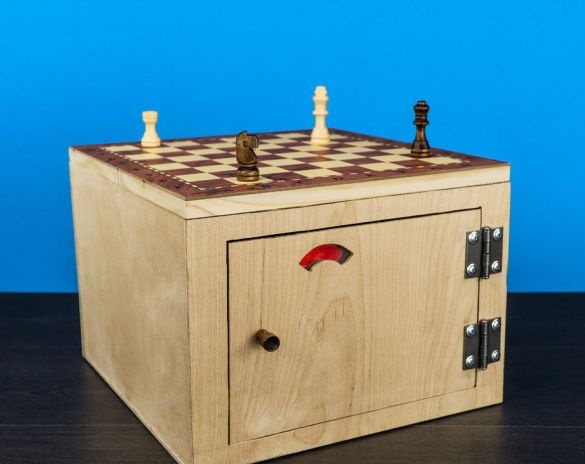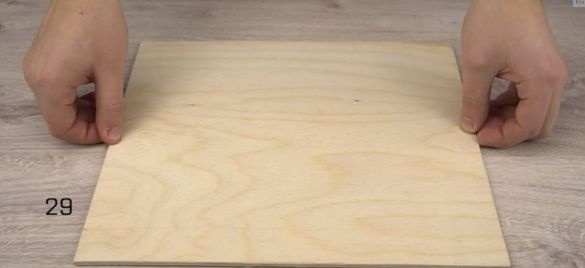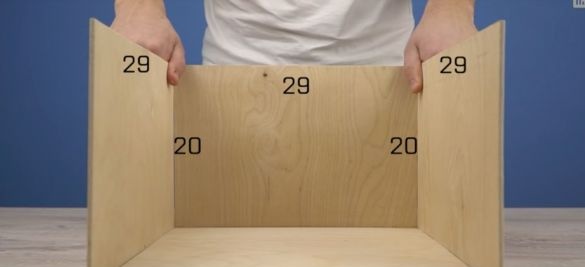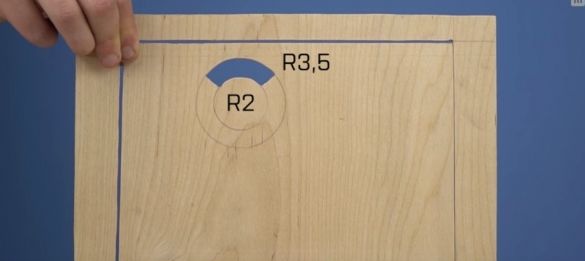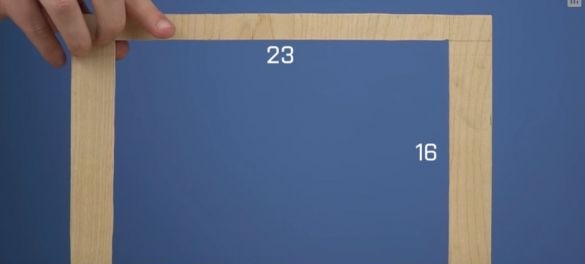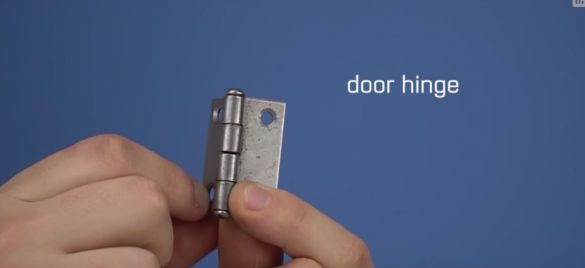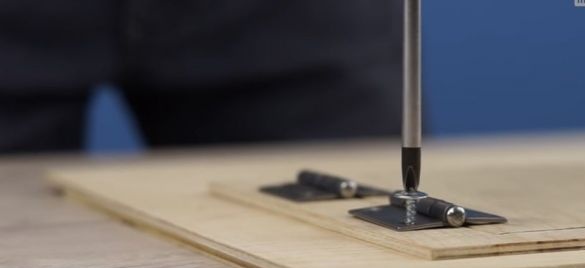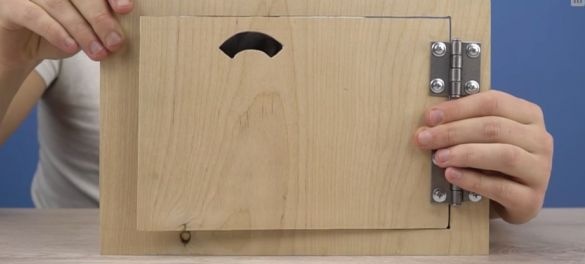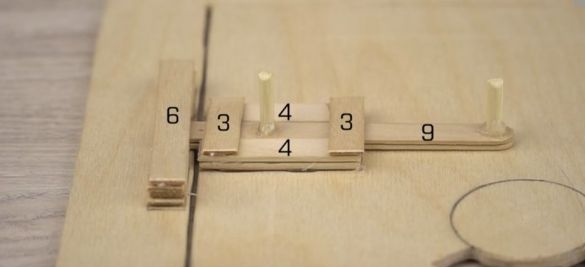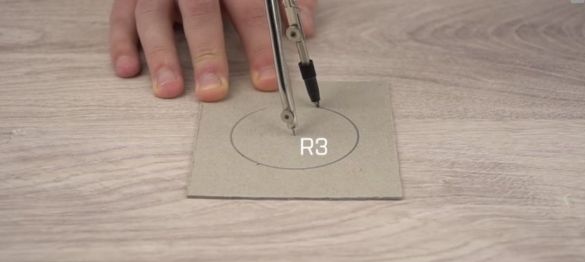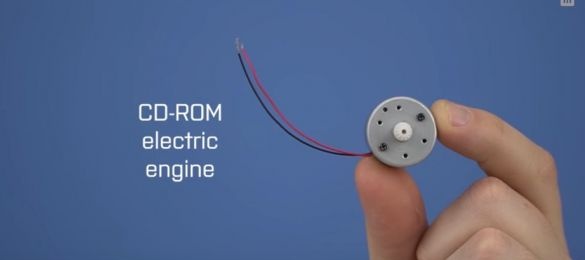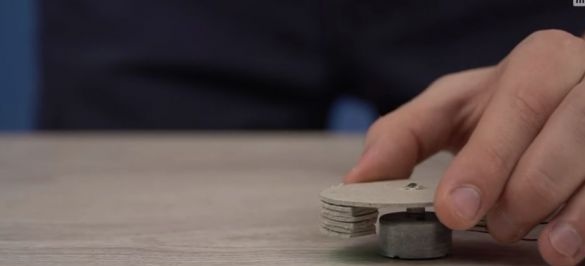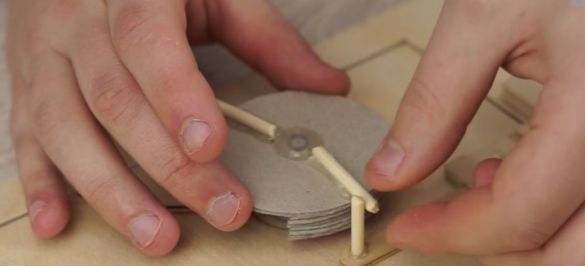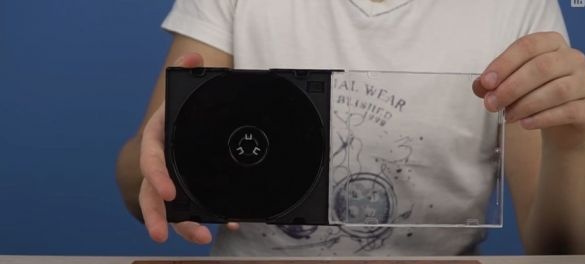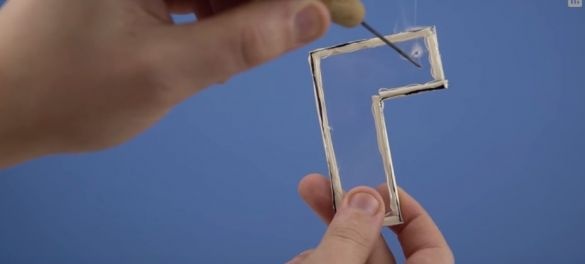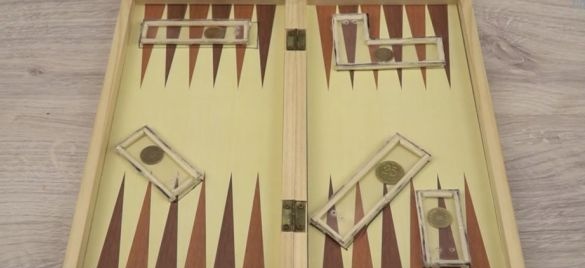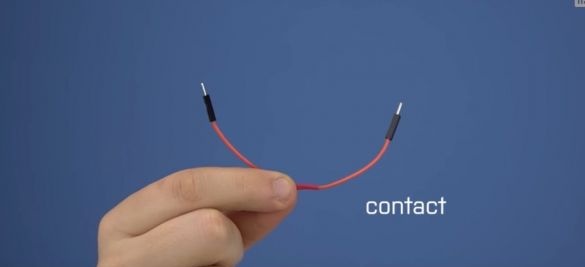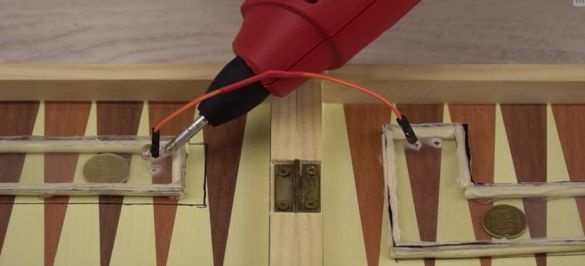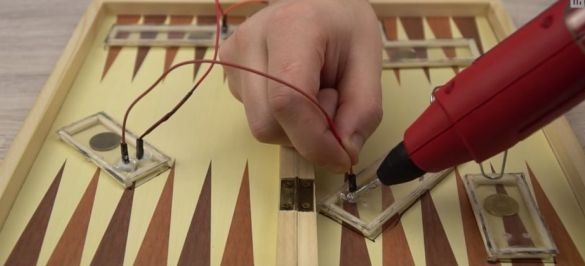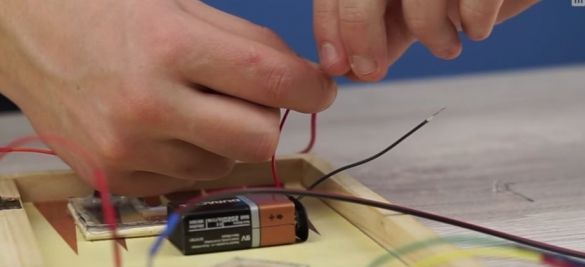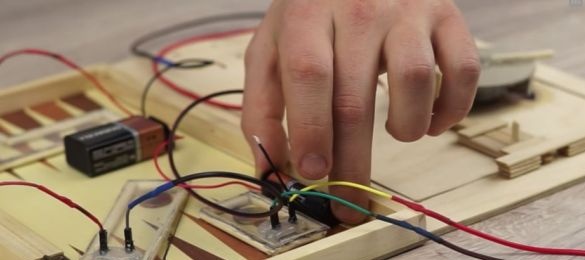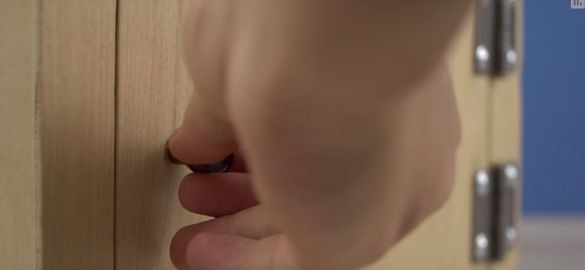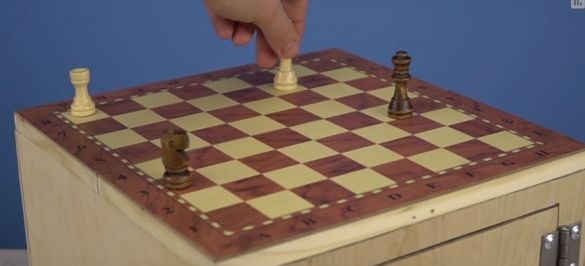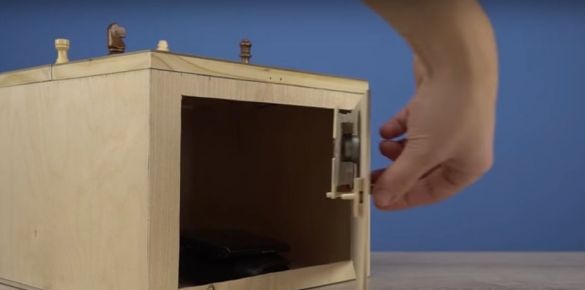Of course, this is not a full-fledged safe, but the idea of such a "chess" castle is interesting. If you slightly improve the design of both the safe and the lock, then it is quite possible to use them as, for example, chess with a minibar or a coffee table with a secret box. In my opinion, it is necessary to consider the possibility of mechanical opening, add a battery indicator and a trailer.
Tools and materials:
-Plywood;
-Rule;
-Pencil;
- Jigsaw;
- Jigsaw;
-Glue gun;
-Compass;
- Canopies;
-Screwdriver;
Self-tapping screws;
-Motor;
-Glue;
-Battery;
-Chess board;
-Boxes from under CDs;
-Awl;
- Coins (should be magnetized);
-Wire with contacts.
- Chess pieces with a magnet;
Wooden dowels;
- Sticks for ice cream;
-Cardboard;
-Scissors;
- Red and green felt-tip pens;
-Bunny black (optional); -)))
Step One: Safe
From plywood cuts out parts of the safe. Dimensions are shown in the photo. The bottom is 29 * 29 cm, the rear, side and front walls are 29 * 20 cm. Then the door 23 * 16 cm is cut out from the front wall. It draws two circles at the top of the door, with a radius of 2 and 3.5 cm. Cut the window. Then he collects the box using a glue gun. The door, after installing the lock, hangs on the hinges.
Step two: locking mechanism
Assembles a castle. Cuts, approximately in half, two sticks for ice cream. Glues them in two. It glues to the door - these are guides. Between the guides sets a deadbolt, two whole glued sticks with vertically glued dowels. The guides are glued on top of the guides. Glues the locking strip.
From cardboard cuts several circles with a radius of 3 cm.
It leaves one circle, divides the rest into four parts, cuts 12 strips. Glues them in six pieces. It paints one with red and the other with green felt-tip pen (indicators). Glues them to a circle, opposite each other.
A hole is made in the center of the circle. Glues a circle on the motor axis with indicators inward. The motor sticks to the door.
On the turntable glues two dowels. When the circle is turned, the dowels will interact with the bolt and it will close or open.
Step Three: Lock Mechanism
Now consider how the master made the lock mechanism itself. He cuts out plates from one of the CD boxes, one L-shaped, four rectangular. The width of the plates = the width of the chess cell and a little more than a coin. At the edges of the plates sticks sticks. Marks the mounting locations of the plates. Puts coins. On one side of each plate makes two holes for the contacts. Glues the plate to the board.
The wires with the contacts are inserted into the holes of the four plates. Connects them in series. The fifth plate connects to the battery with reverse polarity. Now, when the contacts are closed with coins, in four plates, power is supplied to the motor. The circle rotates and pushes the deadbolt. Then all the coins return to their original position. The contact with the reverse polarity closes. The engine rotates in the opposite direction and the lock closes.
After checking the operation of the mechanism, sets the door and chessboard. Places chess pieces with magnets on the board. Everything safe with a "chess" key is ready.
Those who want to know where the rabbit is,
watch the video.

